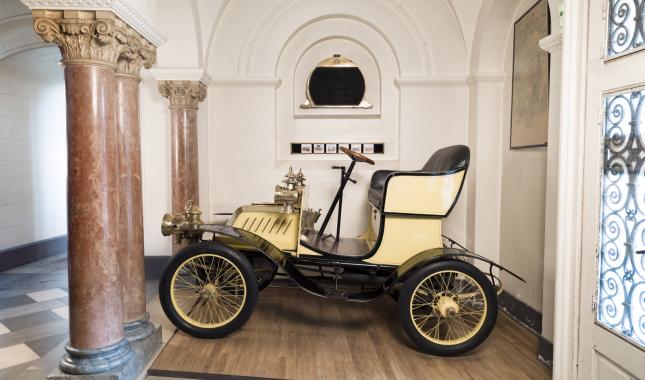Coach, Coachwork!
What is the difference between a vehicle and an automobile? Automobiles are vehicles, but not all vehicles are automobiles. Before the development of automobiles in the 19th century, people travelled in vehicles drawn by animals, mostly horses. Coaches, carriages and carts are certainly vehicles, but they are not automobiles. An automobile is a vehicle which is self-driven by an engine.
There were several types of horse-drawn vehicles, often described by the form of their coachwork: convertible, sedan, landau, carriage… These types of bodywork were adapted by the designers of the first automobile, by the craftsman who were working simultaneously on horse-drawn vehicles and automobiles.
Many craftsmen worked on all the elements of the automobile, to satisfy the wishes of the rich owner who wanted to personalise his vehicle. The automobile manufacturer delivered an automobile on a chassis with wheels, engine and components. Then the cabinetmaker was involved to produce the wooden cockpit which defines the general shape of the automobile. The saddler-upholsterer produced the seats, the roof headliner and the hood of leather or cloth, and the coachbuilder made the metal bodywork. Other components were then added such as lanterns, headlights and horns.
The forms of bodywork evolved with the development of car design and in the 1920s, a new type of bodywork appeared, especially designed for the automobile: the torpedo convertible.

Coupé De Dion Bouton
1901 - Type L carrosserie transformable
Phaéton De Dion Bouton
1902 - Type K1 « Populaire »
Double phaéton Rochet-Schneider
1909 - Type 9000
Double berline Léon Bollée
1911 - Type G série 1
Torpédo Delaunay Belleville
1924 - Type P4B
Coupé Skiff Fiat
1930 - Typo 521
Limousine Renault Vivastella, carrosserie Billeter
1933 - Type PG7
Limousine Hispano-Suiza, carrosserie Fraynay
1936 - Type K6 Coupé de ville
Cabriolet Talbot Lago, carrosserie Dubos
1951 - Type T26
Cabriolet Maserati, carrosserie Frua
1957 - Type A6 G 2000French coachwork, a skill recognised by UNESCO
France was a pioneer of the automobile industry, and was known in the 1920s and 1930s as the country of the automobile, especially of luxury vehicles. Prestige brands like Bugatti, Delage, Delahaye, Talbot-Lago, Voisin competed for the services of creative coachbuilders who dictated trends and good taste. The great names of these coachbuilders remain as an important element in the history of the automobile: Billetter et Cartier, Henri Chapron, Louis Dubos, Marius Franay, Gangloff, Henri Gauthier…
In 2016, this skill was added to UNESCO’s list of Intangible Cultural Heritage.

